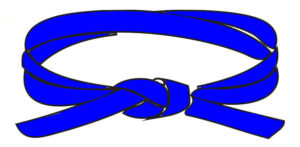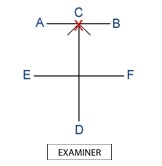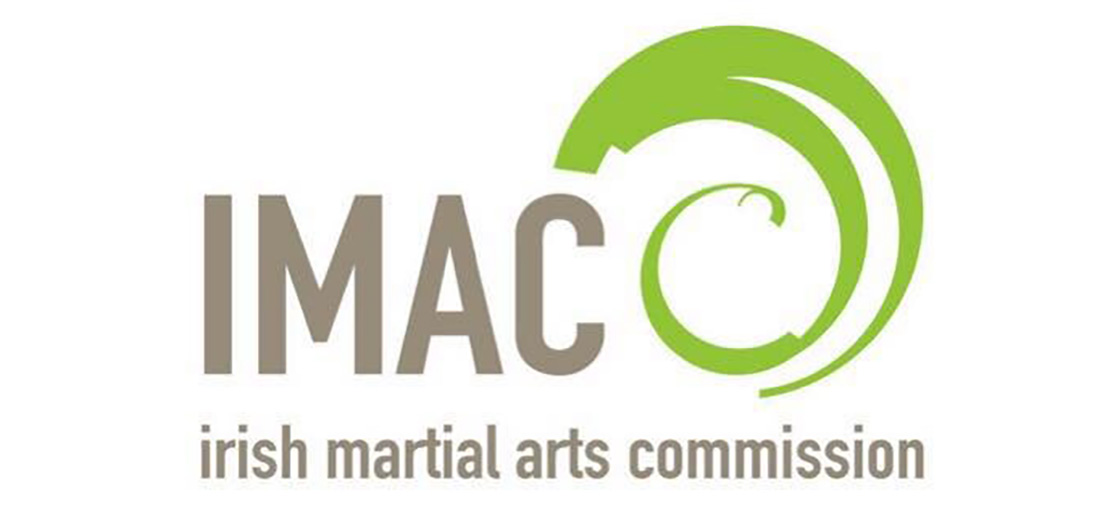Blue Belt : Revision
You Are Here: Blue Belt
Blue Belt 4th Kup
PATTERN – Joong-Gun 32 movements 
JOONG-GUN is named after the patriot Ahn Joong-Gun who assassinated Hiro-Bumi Ito, the first Japanese governor-general of Korea, known as the man who played the leading part in the Korea-Japan merger. There are 32 movements in this pattern to represent Mr. Ahn’s age when he was executed in a Lui-Shung prison (1910).
New Techniques
- Reverse knife-hand middle block
(Sonkal dung kaunde makgi)
- Upper elbow strike
(Wi palkup taerigi)
- Pressing block
(Noolyo makgi)
- Right angle punch
(Kiokja jirugi)
- U-shape block
(Digutja makgi)
- Rear foot stance
(Dwit bal sogi)
- Low stance
(Nachuo sogi)
- X – Block
(Kyocha makgi)
- Downward block
(Naeryo makgi)
Power test techniques
- 1. Knife-hand strike to target at 45-degree angle
- Right and Left reverse turning kicks to target at 45 degree angle
1 Step Sparring – IIbo Matsoki
Attacking and Defending
(One step consists of counter attacks to a single punch in a walking stance. All attacks start from parallel ready stance, first on the right side then on the left side. Counter attacks to punches from either side must be practiced.)
The defender must execute efficient blocking or evading techniques followed by counter attacks consisting of a combination of hand or foot striking techniques or take down techniques. Regardless if the defender is to evade or take down their partner they should always follow through to “finish off’ their attacker
- It is vital that all techniques are correct and focused on the proper target.
- Proper distance and control must be maintained.
- All kicks and punches must be fully extended to the target without striking.
Therefore demonstrating the exponent’s proficiency and control as expected of their grade
Pattern: Joong-Gun

Joong-Gun
Movements – 32
Ready Posture – CLOSED READY STANCE “B”
1. Move the left foot to B forming a right L-stance toward B while executing a middle block to B with the left reverse knife-hand.
2.Execute a low side front snap kick to B with the left foot, keeping the position of the hands as they were in 1.
3. Lower the left foot to B and then move the right foot to B forming a left rear foot stance toward B while executing an upward block with a right palm.
4. Move the right foot to A forming a left L-stance toward A, at the same time executing a middle block to A with a right reverse knife-hand.
5. Execute a low side front snap kick to A with the right foot, keeping the position of the hands as they were in 4.
6. Lower the right foot to A and then move the left foot to A forming a right rear foot stance toward A while executing an upward block with a left palm.
7. Move the left foot to D forming a right L-stance toward D while executing a middle guarding block to D with a knife-hand.
Your Pattern click on the video below to view
New Techniques Learn these
with thanks to Grand Master Donato Nardizzi.
with thanks to Grand Master Donato Nardizzi.
Questions You may be asked....
- How many moves in Joong-Gun? – 32
- Meaning of Joong-Gun? – Joong-Gun is named after the patriot Ahn Joong-Gun who assassinated Hiro-Bumi Ito, the first Japanese governor general of Korea , known as the man who played the leading role in the Korea-Japan merger. The 32 movements in this pattern represent Mr. Ahn’s age when he was executed in Lui-Shung prison in 1910.
- What is the Korean for U-shape block and its purpose? – Digutcha Makgi – To block a pole or staff with the Arc hand of both hands
- What other name is given to U-shape block. Both English & Korean? – Pole block – montong makgi
- What is the Korean for Twin upset punch? – Sang Dwijibo Jirugi
- What is the Korean for Rear foot stance & explain it? – Dwitbal Sogi
- What is the Korean for Low stance & explain it? – Nachuo Sogi
- What is the release move in Joong-Gun & explain it? – Japkgi (grasp), Jap sol tay (release)
- Name 7 different blocks. Both in Korean & English? – Najunde Bakat Palmok makgi, Kaunde An palmok makgi, Najunde Sonkal makgi, Chookyo makgi, Sang Palmok makgi, Sonkal Daebi makgi, Hechyo makgi, Dollymio makgi, Golcho makgi, Sang Sonkal makgi, Doo Palmok makgi, Digutcha makgi, Noolyo makgi, Sonkal Dung makgi, and Kyocha Chookyo Makgi
- Name 6 different kicks. Both in Korean & English? – Apcha busigi (front snap kick), Yop chajirugi (side piercing kick), Dollyo chagi (turning kick), Dwit chajirugi (back piercing kick), Bandae Dollyo chagi (reverse turning kick), Naeryo chagi (downward or axe kick), Noollo chagi (pressing kick), Yonsok chagi (consecutive kick)
- Name 7 different stances. Both in Korean & English? – Gunnon (Walking), Annun (Sitting), Niunja(L stance), Narani (Parrallel), Charyot (Attention), Gojong (fixed), Moa (closed), Goburyo (bending), Kyocha ( “X” ), Nachuo (Low), Dwitbal (rear foot) Sogi (Stance).
- Name 7 different hand parts. Both in Korean & English? – Fore fist (Ap Joomuk), Back fist (Dung Joomuk), Side fist (Yop Joomuk), Knifehand (Sonkal), Reverse Knifehand (Sonkal Dung), Finger tips (Sonkut), Arc Hand (Bandal Son), Elbow (Palkup), Palm (Sonbadak), Open fist/palm heel (Pyun Joomuk)
- Name 5 different foot parts. Both in Korean & English? – Ball of the foot (Apkumchi), Foot sword (Balkal), Instep (Baldung), Back Heel (Dwichook), Toes (Balkut), Back sole (Dwitkumchi), Reverse Foot sword (Balkal Dung).
- Name 6 different hand attacks from pattern Joong-Gun. Both in Korean & English? – Upward elbow strike – Wi Palkup Taerigi, Angle punch – Giokja Jirugi, Twin upset punch – Sang Dwijibo Jirugi, Twin Vertical punch – Sang Sewo Jirugi, Fore fist punch – Ap joomuk Jirugi, Backfist Strike – Dung Joomuk Taerigi
- What is the ready position in Joong-Gun. Both in Korean & English? – Closed ready stance “B” – Moa jumbi sogi “B” (Hands 15cm from the Navel)
- Why do we perform 1-step sparring? – To practice and learn distance, timing and correct target areas
- Why do we perform patterns? – To practice both offensive & defensive techniques against imaginary opponent, or opponents. To build strength, speed, balance and timing with your body.
- Why do we learn the meanings of patterns? – To gain inspiration and remember the history of those who came before us.
- What is Pressing Block in Korean? – Noolyo Makgi
- What is the Korean for “X” rising block? – Kyocha Chookyo Makgi
- What does the colour red signify? – Red signifies danger, cautioning the student to exercise control, whilst warning the opponent to stay away.
- What is the Korean for Angle punch? – Giokja Jirugi
- One question from previous Gradings! – Remember and know your previous Theory




